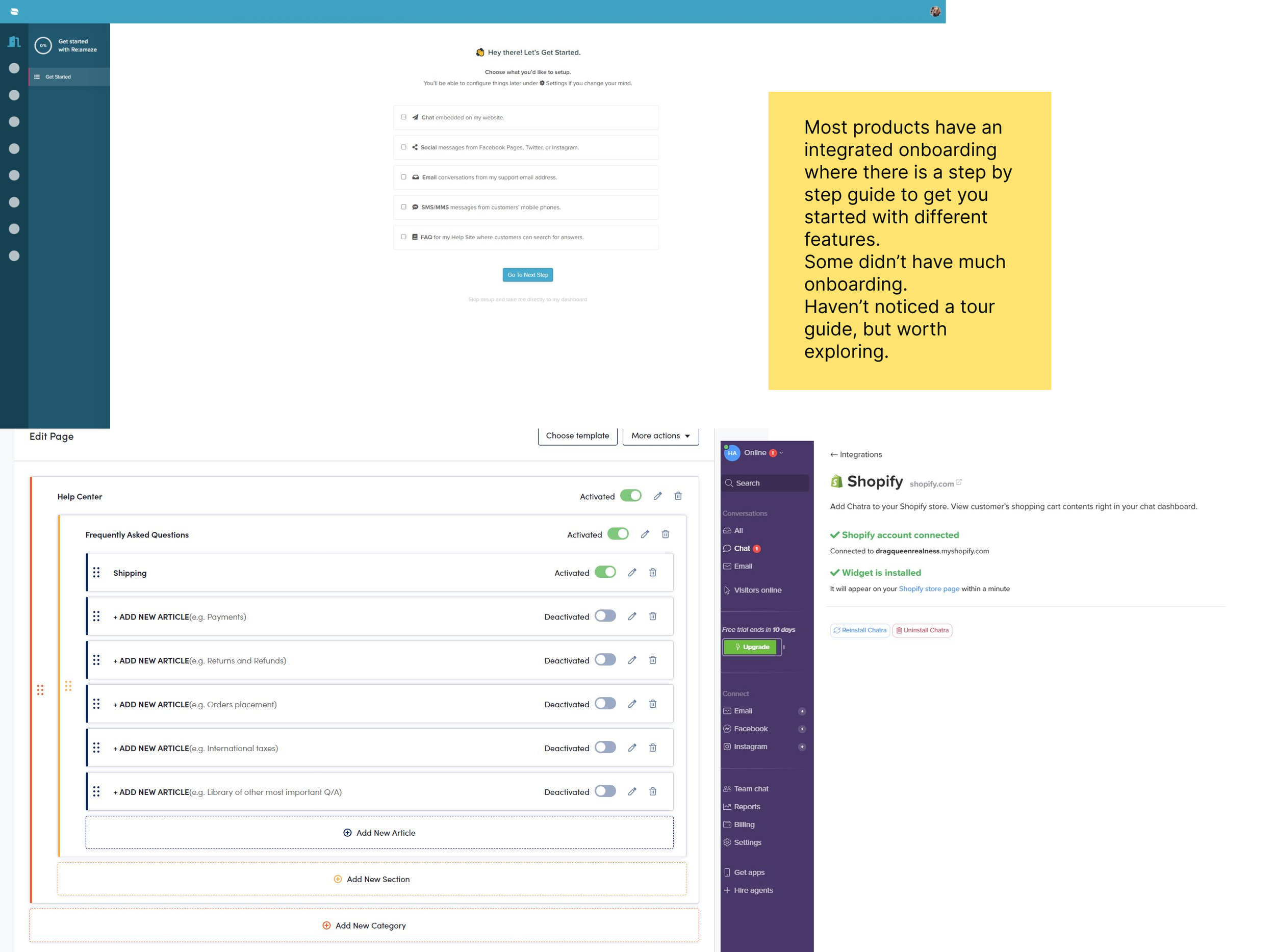Hootsuite Chatbot Onboarding Flow
Empowering Shopify merchants to automate their chatbot conversations with our app
Introducing Heyday
Heyday by Hootsuite is an AI chatbot for retailers that helps them manage different chats in one place.
The chatbot allows retailers to chat live with their customers or automate their FAQs (Frequently asked questions), so the chatbot takes care of answering customers 24/7.
However, we noticed that the FAQ automation feature had a low adoption rate during the free trial, so users weren’t converting to a paid plan.
Moving the needle
In the past year, only 500 FAQs were automated, leading to poor retention and conversion rates in the self-serve Shopify app. To address this, the Growth Product Manager and I collaborated to rethink the onboarding experience through experimentation.
The experiment's goal is to increase the adoption of the FAQ automation feature.
People on the project
My role
Lead the content design strategy for the Shopify onboarding.
Collaborate with the UX designer and PM to create an efficient onboarding flow.
Collaborate with the UX researcher to measure the impact of the project.
Collaborate with the marketing team to ensure content consistency.
Team
People who worked on this project:
UX Writer
Growth product manager
Data analyst
@Heyday from Shopify
Digging deep
To better understand why users weren’t automating their FAQs, I started by collecting data that could help me empathize with them:
I reviewed our marketing messaging to see if the expectations match the in-product experience.
I consulted our customer service team to learn what users aim to achieve when downloading the app.
I analyzed Jira complaints to identify common pain points.
What I found
Users download the app to automate their FAQs but never reach the point where they experience its value. Instead, they are dropped into an empty inbox with no guidance on setting up their chatbot.
Many customer service agents noted that users are far more comfortable with live conversations, and the majority of support tickets they receive are related to setting up FAQ questions. This suggests that users have a learning curve when it comes to using the FAQ automation feature.
When users signed up for the product, the first thing they saw was an empty inbox—not exactly the warmest welcome. There was nothing to guide them, no friendly message to say hello, and no instructions on how to set up their chatbot. It left them feeling a bit lost right from the start.
Jobs to be done
From these findings I was able to define a job to be done for this experiment:
"When using Heyday for the first time, I want to be guided to set up FAQ automation so I can quickly get up to speed, save time, and deliver excellent customer service without feeling overwhelmed."
Doing more with less
Lack of engineering resources
At the time, the new growth initiatives didn’t have dedicated engineering resources, so we had to find creative ways to jumpstart experimentation without depending on engineers.
Appcues saves the day
The product team had previously integrated Appcues, a no-code user onboarding software. This tool allows us to add in-app messaging, such as tooltips and product tours, layered over the existing product. However, it doesn't modify the product's underlying components or behavior.
Quick Benchmark
To get inspired, I took a closer look at how the most popular chatbot software in the Shopify App Store handle onboarding.
One thing stood out: their onboarding is built right into the product, making the experience seamless and avoiding issues like users landing in an empty inbox. It felt like the perfect solution. But with limited resources, I needed to figure out how to improve our onboarding experience in a way that works for us.
User journey
I began the design process by mapping the user journey to identify potential pain points. This helped me determine where to guide the user and what information to include to enhance their experience and help them reach their goal.
Tested design
Based on the user journey, I designed a new onboarding experience for testing, allowing us to gather more insights into user behavior and refine it further.
The experiment started in November.
Results
200% increase in Monthly FAQs automation.
238 FAQs were automated in two months compared to the 500 that were automated the previous year.
FAQ adoption rate increased by 17%.












